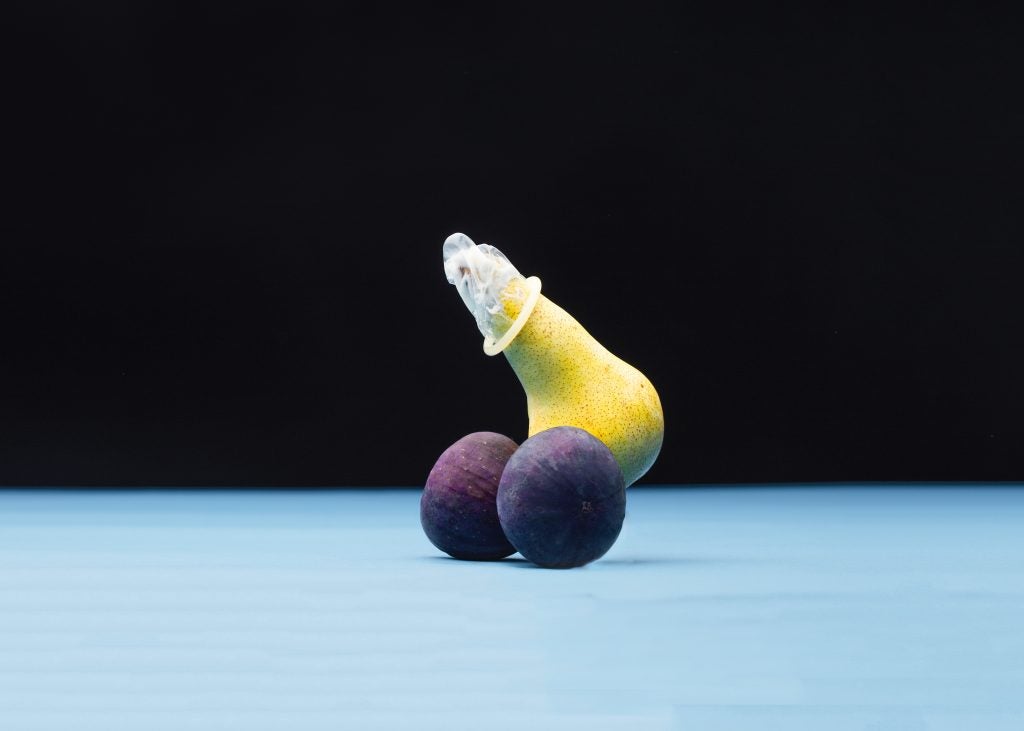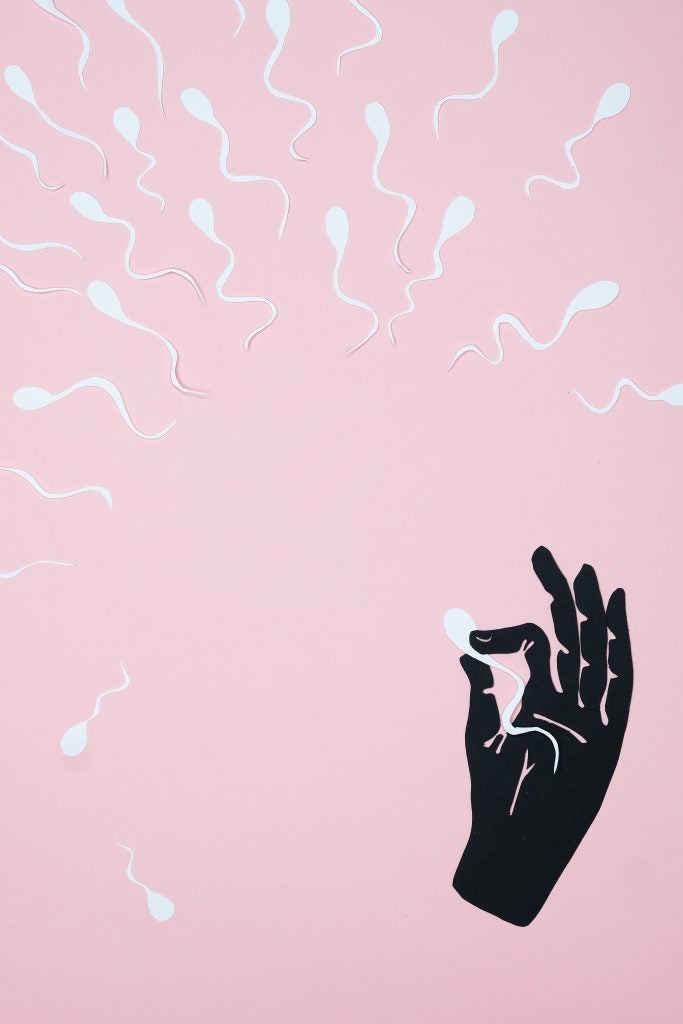
A hydrocele is a fluid-filled sack that surrounds a testicle and causes swelling in the scrotum.1 A hydrocele can develop on one side of the scrotum (unilateral), or on both sides of the scrotum (bilateral). Hydroceles are common in newborns and infants, though most hydroceles go away by the time the child turns 1 year old. Older boys and adult males can get hydroceles if their scrotum has been injured or is inflamed due to an infection.1
Women can also develop a hydrocele, although it is very uncommon. This is possible because of the common embryological background of male and female gonadal structures.2 In this case, the sack and connection exist in the labia majora (the outermost and larger of the two labial structures).
Table of Contents
Types of hydroceles
There are two types of hydroceles, communicating and non-communicating.
Communicating
Communicating hydroceles are present at birth and occur when the opening between the abdominal cavity and the scrotum hasn’t closed completely, allowing abdominal fluid to pass into the sac and around the testes.4 Though painless, a communicating hydrocele can change in size over time.
Noncommunicating
Noncommunicating hydroceles occur when the sac closes like normal, but the body does not absorb the fluid inside the sac.7 Non-communicating hydroceles may also be present at birth or develop as the boy matures. In a non-communicating hydrocele, the tail end of the Vaginal process (creation of the abdominal cavity and descent of the testes) closes atypically, creating an accumulation of fluid. Since this fluid is completely enclosed with no fluid drainage or addition, the size of the hydrocele is generally stable, with less intraabdominal pressure.2
Causes
While hydroceles occur in newborns and infants, older boys may develop them later in life.
Infants and Newborns
Most hydroceles are present when a baby is born and cannot be presented. During pregnancy, the baby’s testicles move from their abdomen into their scrotum. In most cases, the sac surrounding each testicle closes and the body of the baby absorbs any fluid inside the sac.6 However, with hydroceles, the body either does not absorb the liquid or the sac does not close. It is estimated that 5% of all newborns develop this problem, but it typically disappears within the first year without treatment.4 Occasionally, the sac remains open, resulting in a communicating hydrocele. Additionally, communicating hydroceles are often associated with inguinal hernias.1 These occur when tissue or, parts of the intestine, protrude through a weak point of the abdominal wall.8
Older Boys and Adult Males
In older males, a hydrocele can develop as a result of an injury or inflammation within the scrotum. It is advisable to wear a protective athletic cup during sports, to avoid any preventable impact.9
Symptoms
The most common symptom associated with a hydrocele is a painless swelling of one or both testes. Adult men may experience discomfort as a result of the added weight of their swollen scrotum but hydroceles rarely cause pain. Swelling is often at its lowest in the morning because lying down removes the extra tension of gravity but it may worsen as the day goes on. If you or your child experiences sudden severe pain and swelling, it is advisable to see a doctor immediately as it may be a hernia or twisted testicle.6
Tests and Diagnosis
When taking your child to a physician, a doctor can diagnose hydroceles by examing the scrotum and other tests which include:
- Determining whether there are tenderness and an enlarged scrotum with a manual examination
- Applying pressure to the abdomen and scrotum to rule out an inguinal hernia
- Shining a light through the scrotum in a process called transillumination (a light spot will indicate the presence of fluid)

After these tests, the doctor may recommend:
- Ordering blood and urine tests to ensure epididymitis is not the underlying problem
- Conducting an ultrasound to determine the other possible causes of swelling (testicular tumor, infection, cancer etc.)
Treatments
Most hydroceles are present at birth, and 95% of those cases resolve spontaneously after one year of age but it is still advisable for a health professional to evaluate the hydrocele to rule out any underlying conditions.1 Those that are not genetically inherited or are still present after one year of age generally require surgical intervention, a procedure called hydrocelectomy. This procedure can be done on an outpatient basis and involves a small incision in the scrotum or lower abdomen to remove the hydrocele.1 After the procedure, a patient will need to keep the area clean and dry.7 The patient may also wear a scrotal support wrap and use ice to relieve any scrotal discomfort.
Complications if Not Treated

A hydrocele is typically not dangerous and does not influence fertility, however, doctors can mistake a more serious medical (infection, tumor, cancer etc.) for a hydrocele. These two serious conditions have the adverse side-effects of sperm reduction and a decrease in sperm efficiency (difficulty fertilizing the female gamete.)1 Inguinal hernias may also be mistaken for a hydrocele because the condition has similar symptoms, such as swelling of the scrotum. Inguinal hernias can either spontaneously resolve themselves or require immediate medical attention depending on the severity.
References
- “Diseases and Conditions: Hydrocele.” Mayo Clinic. Mayo Foundation for Medical Education and Research, 9 Oct. 2014. Web. 19 Nov. 2014.
- Mersch, John. “Pediatric Hydrocele.” MedicineNet. N.p., 12 Dec. 2013. Web. 19 Nov. 2014.
- “Testicle/Scrotal Disorders.” The Urology Group. Specialty Urologic Medical Facilities, 2013. Web. 19 Nov. 2014.
- “Communicating Hydrocele.” HealthyChildren.org. American Academy of Pediatrics, 11 May 2013. Web. 19 Nov. 2014.
- Moore, Kristeen. “Inguinal Hernia.”: Causes, Symptoms & Diagnosis. N.p., 27 July 2012. Web. 19 Nov. 2014.
- “Hydrocele.” Seattle Children’s Hospital, 2019.
- Alli, Renee A. “Hydrocele: Symptoms, Causes, Treatments, Surgery, & More.” WebMD, WebMD, 15 June 2017.
- Clinic, Mayo. “Inguinal Hernia.” Mayo Clinic, Mayo Foundation for Medical Education and Research, 6 Jan. 2018.
- Clinic, Cleveland. “Hydrocelectomy & Hydrocele Treatment.” Cleveland Clinic, 2018.
Last Updated: 07 February 2019
